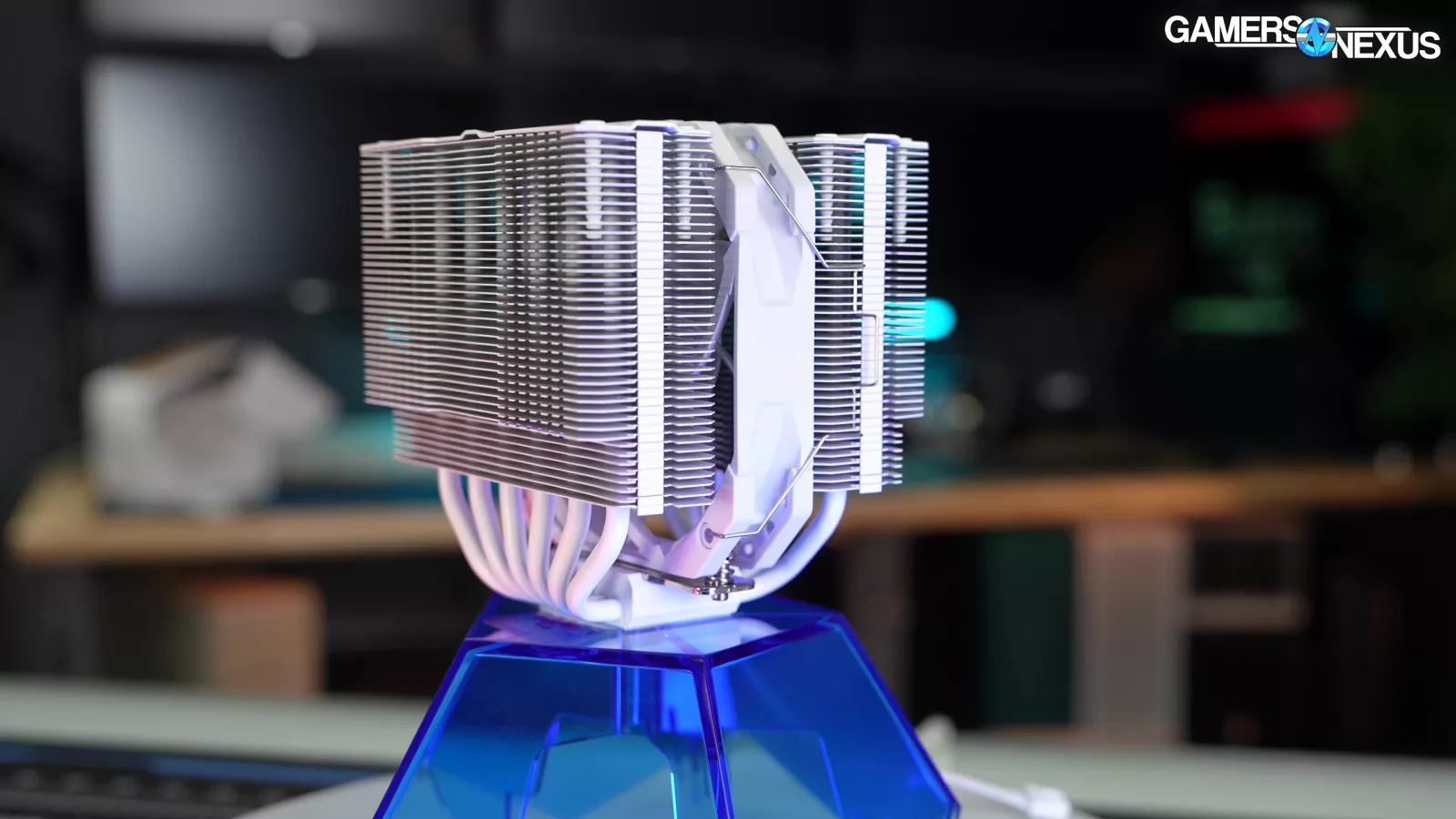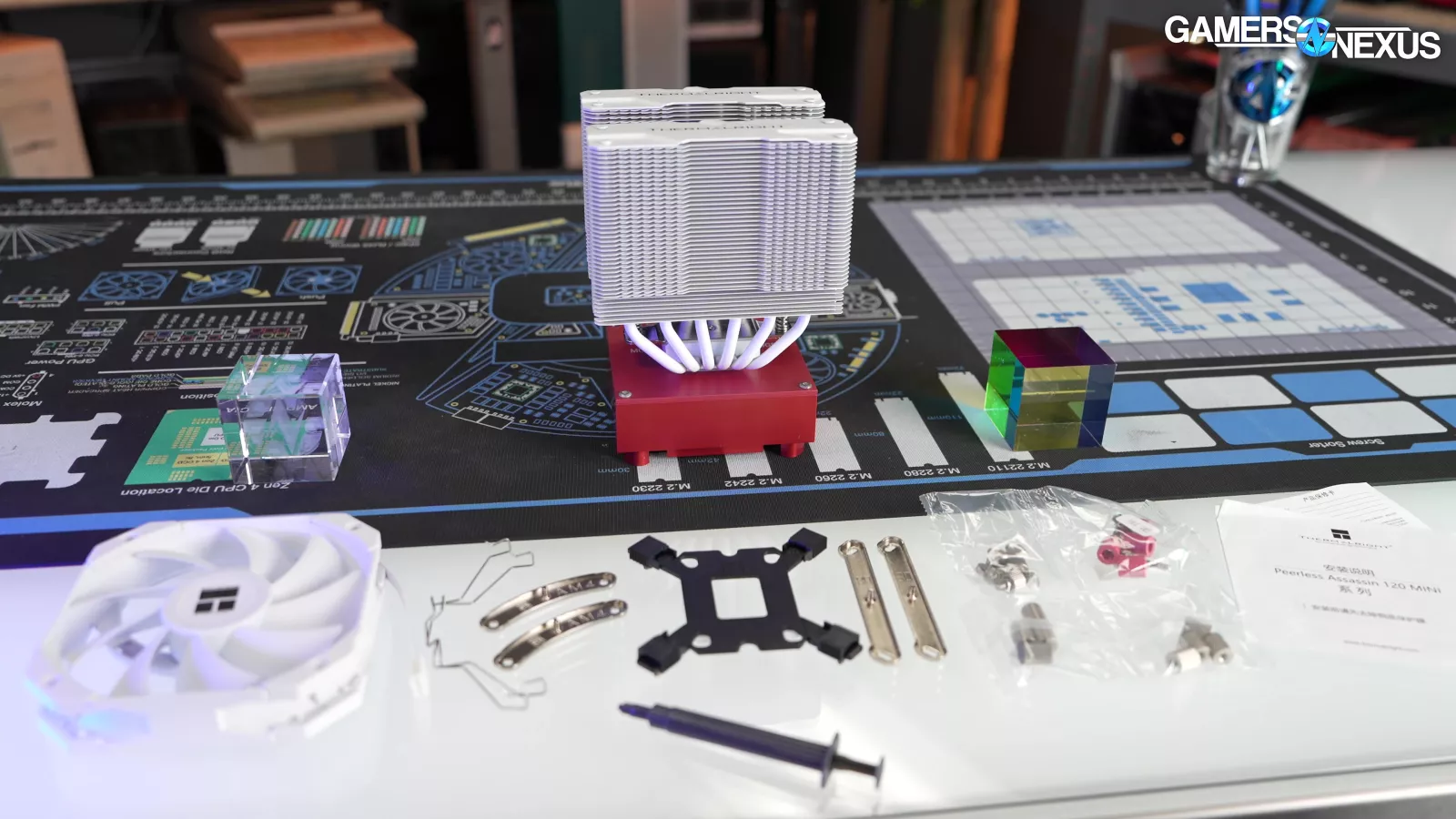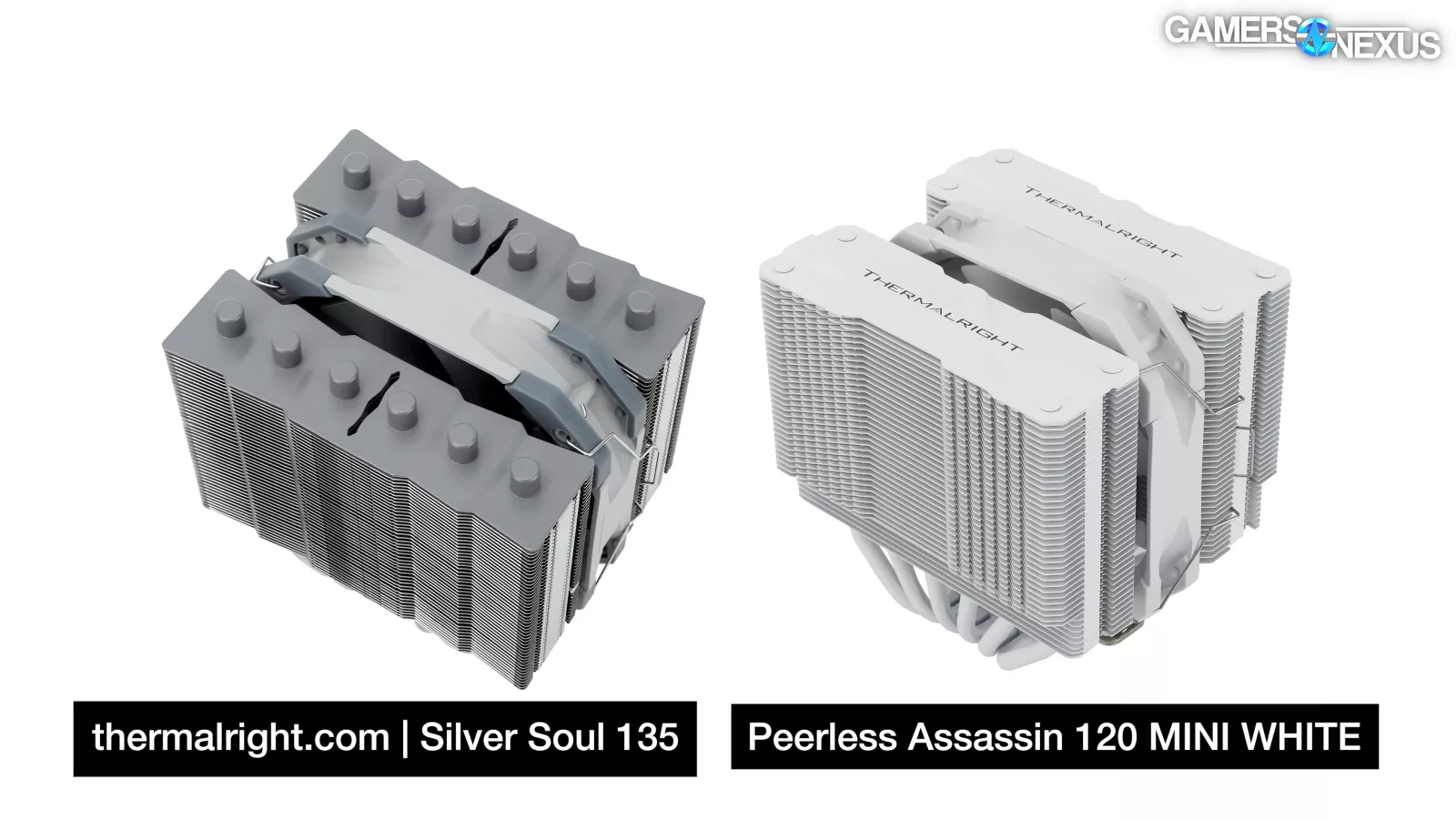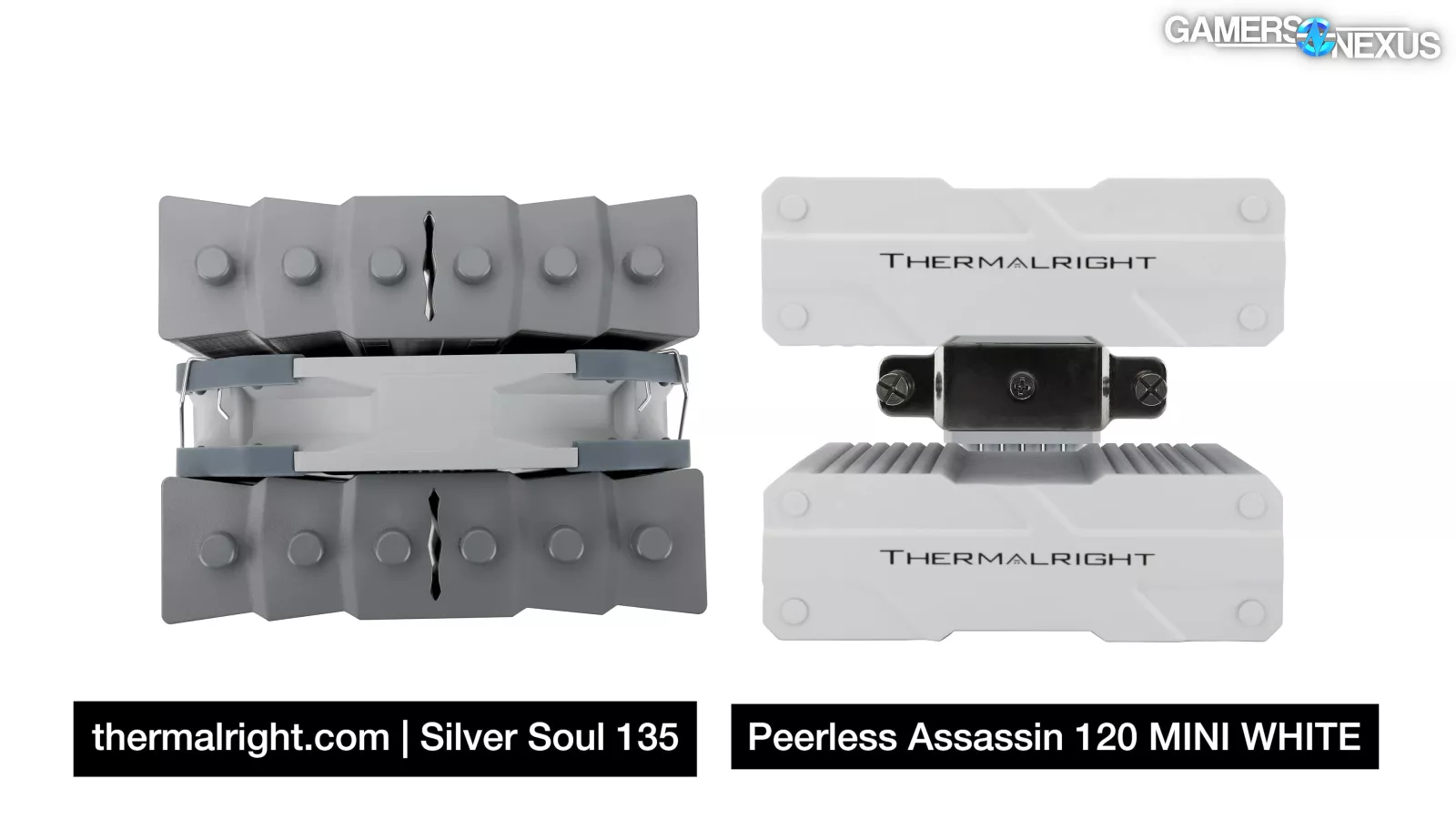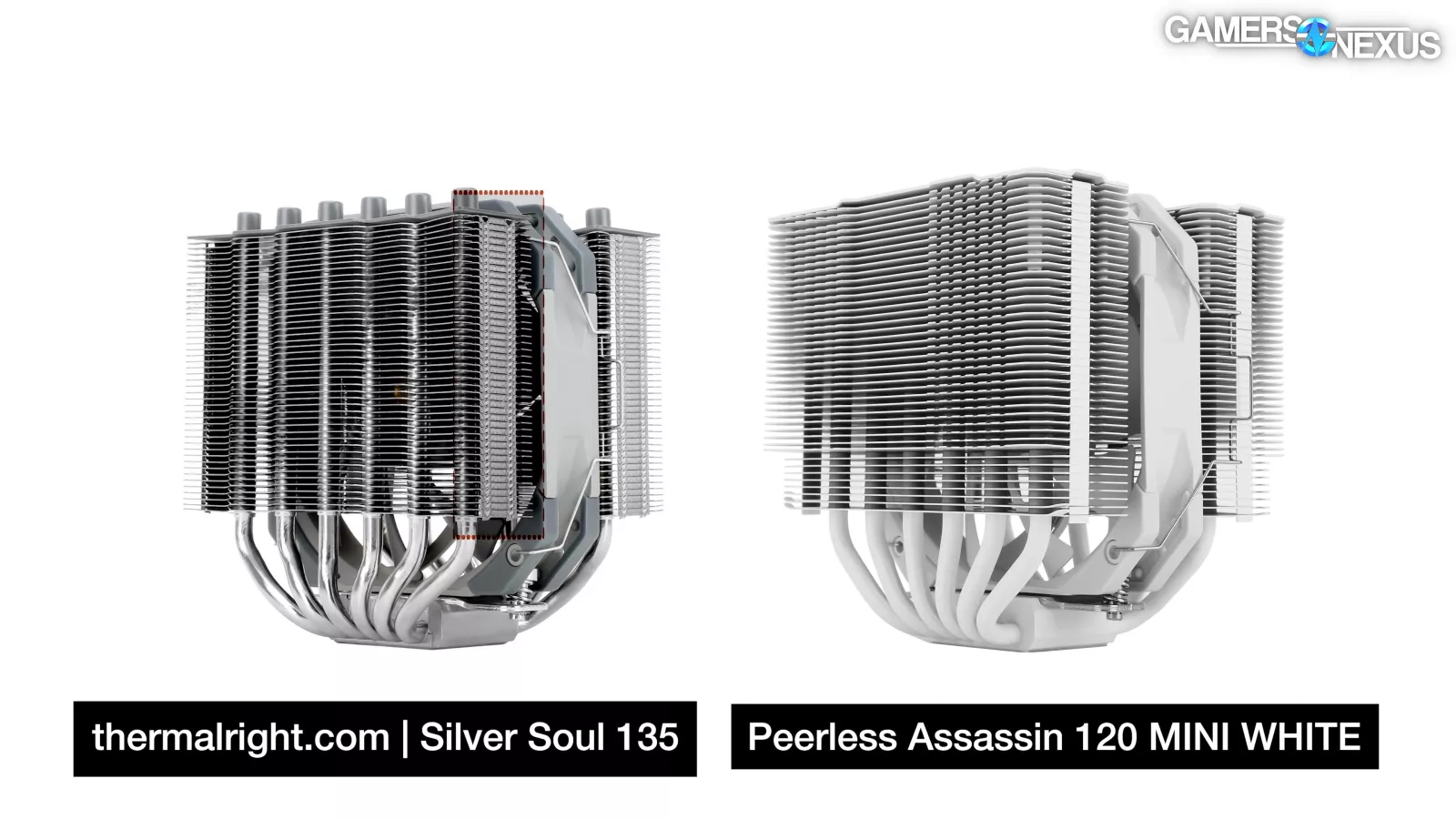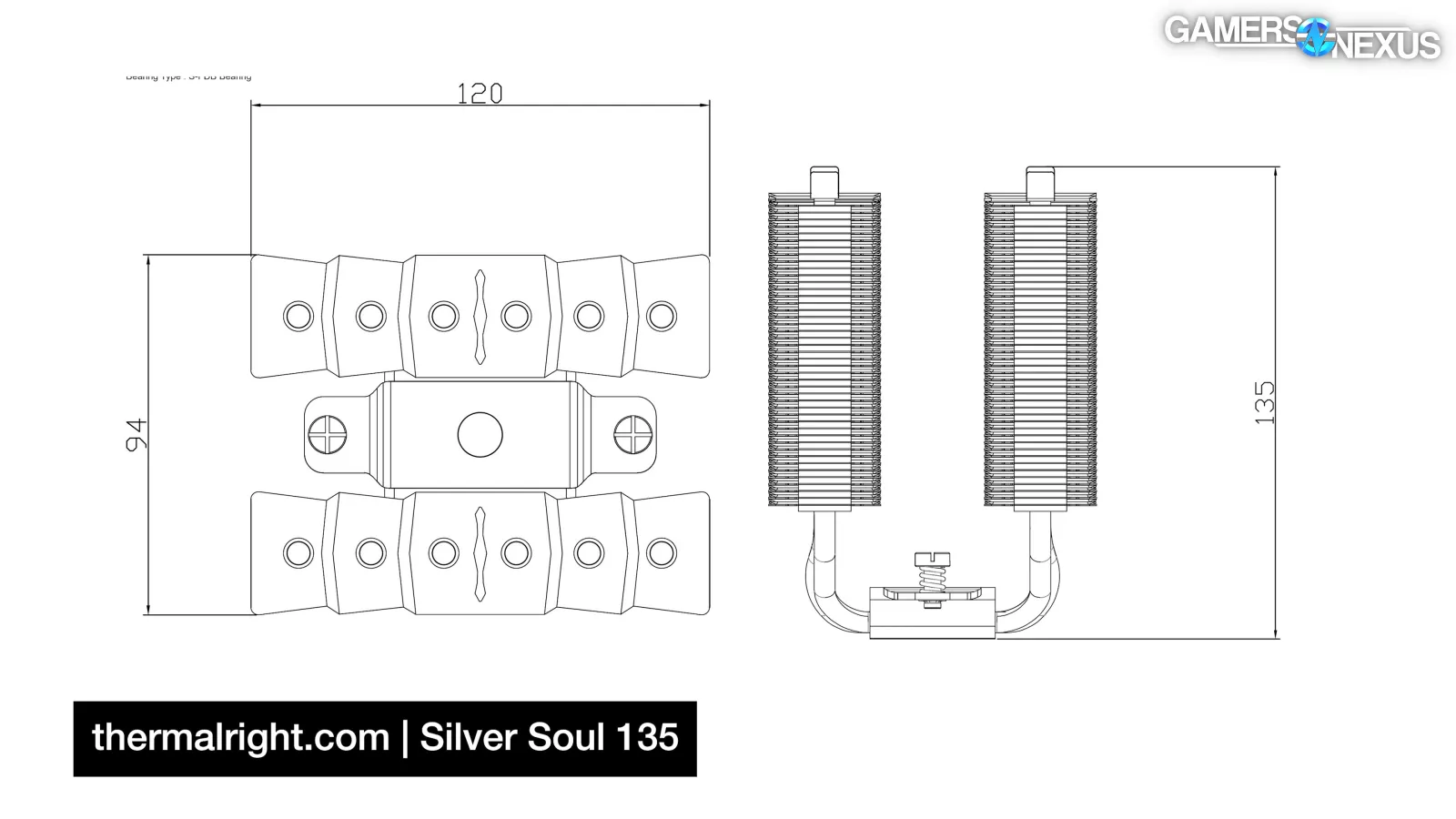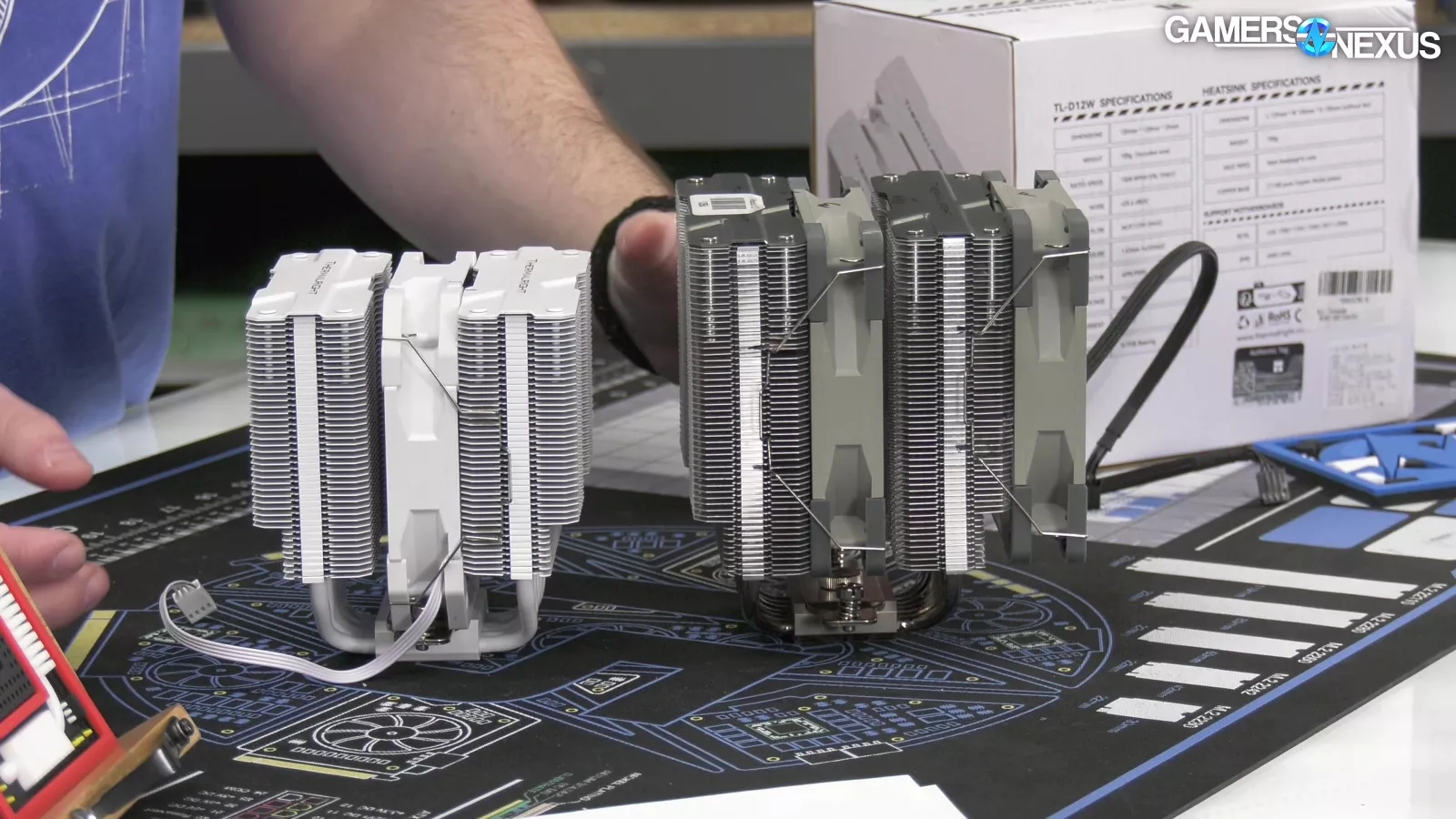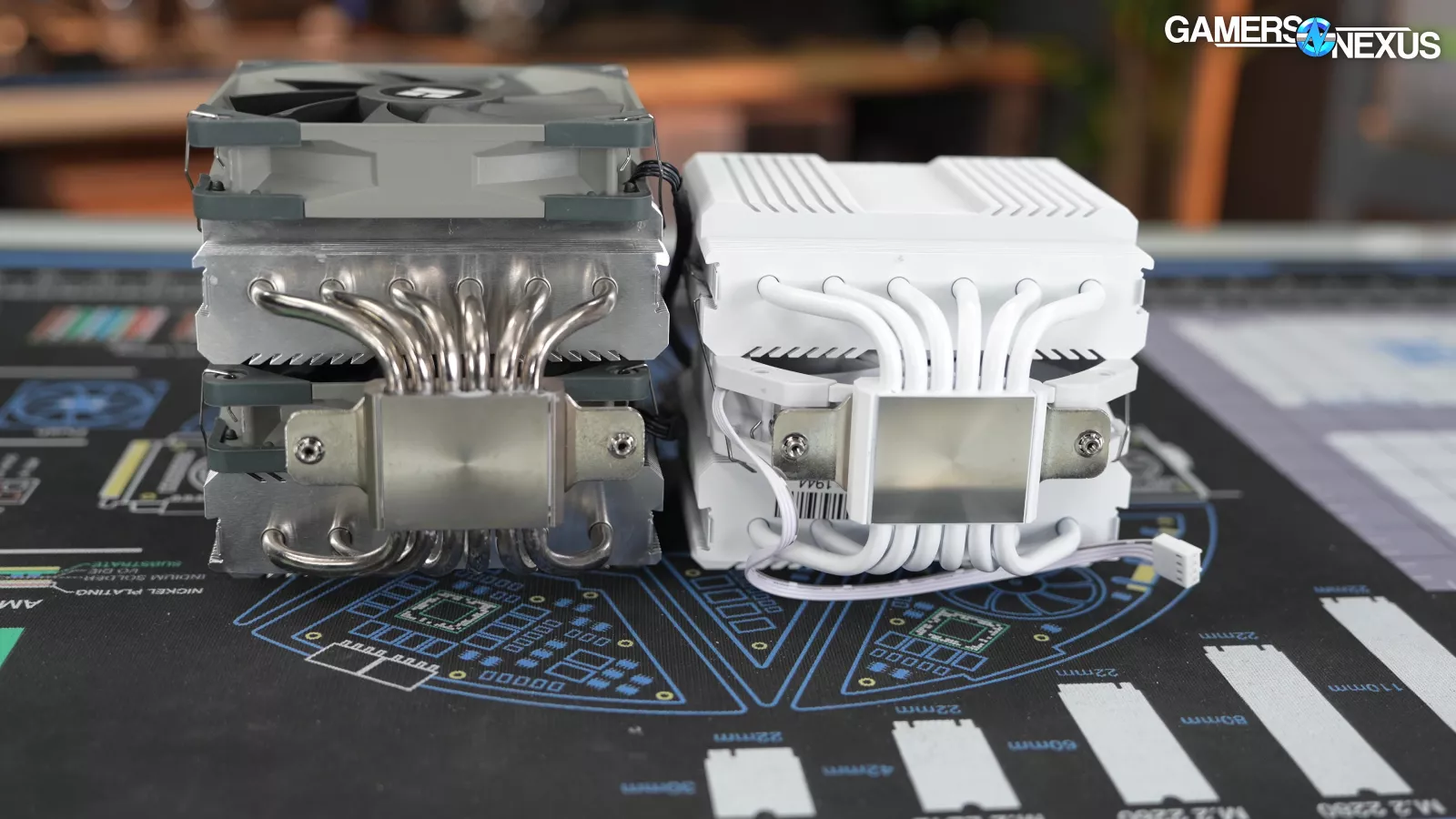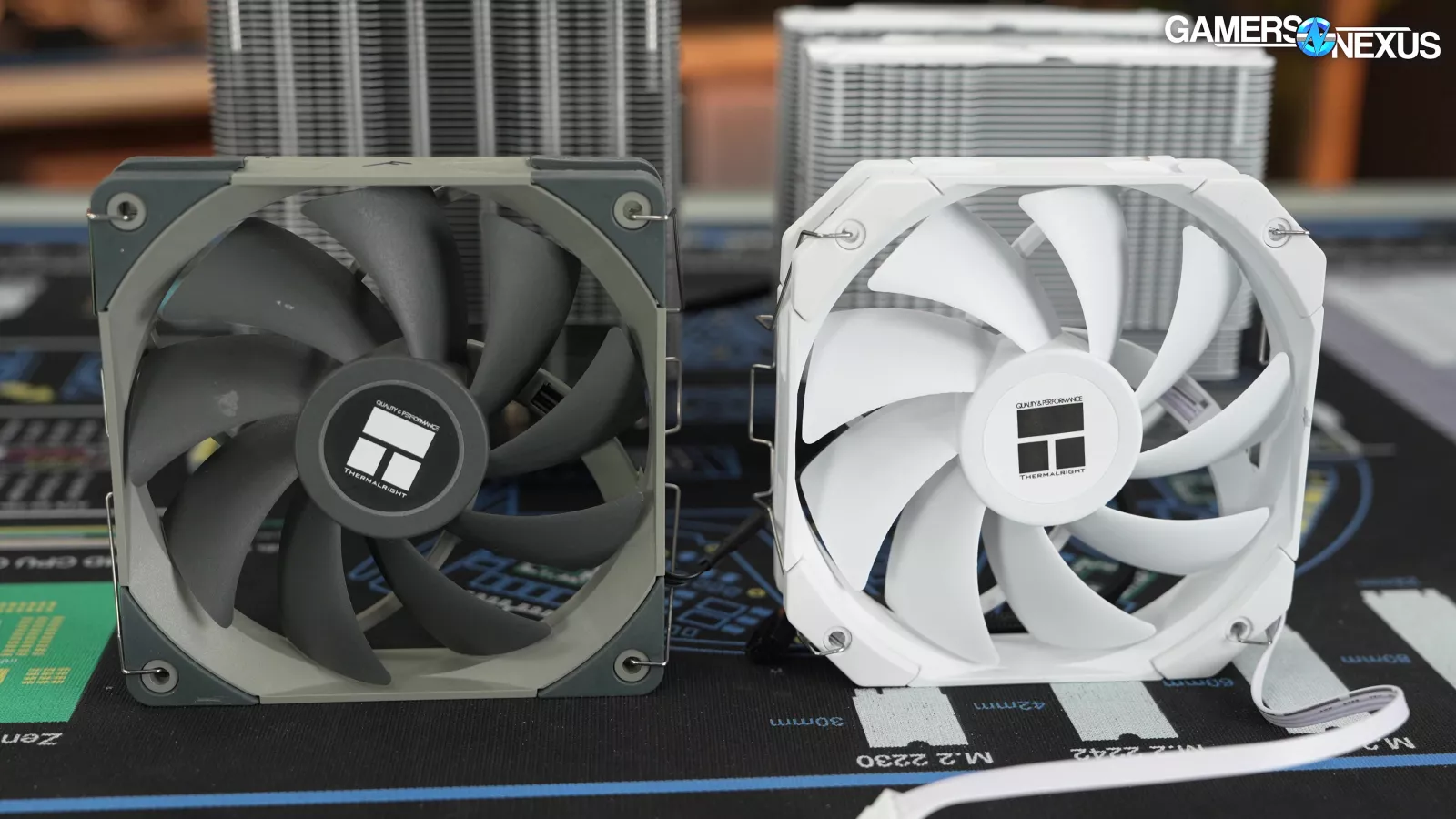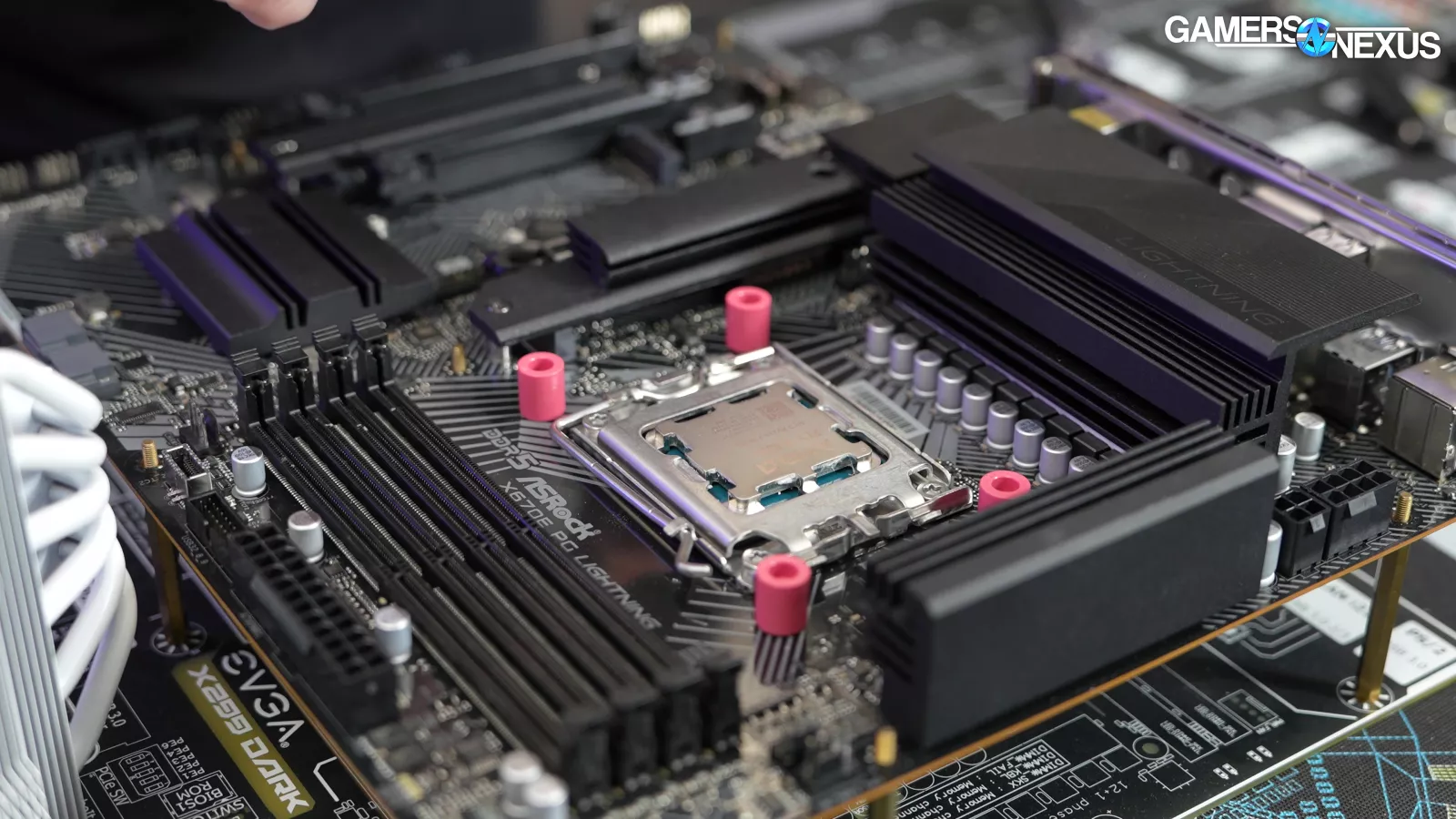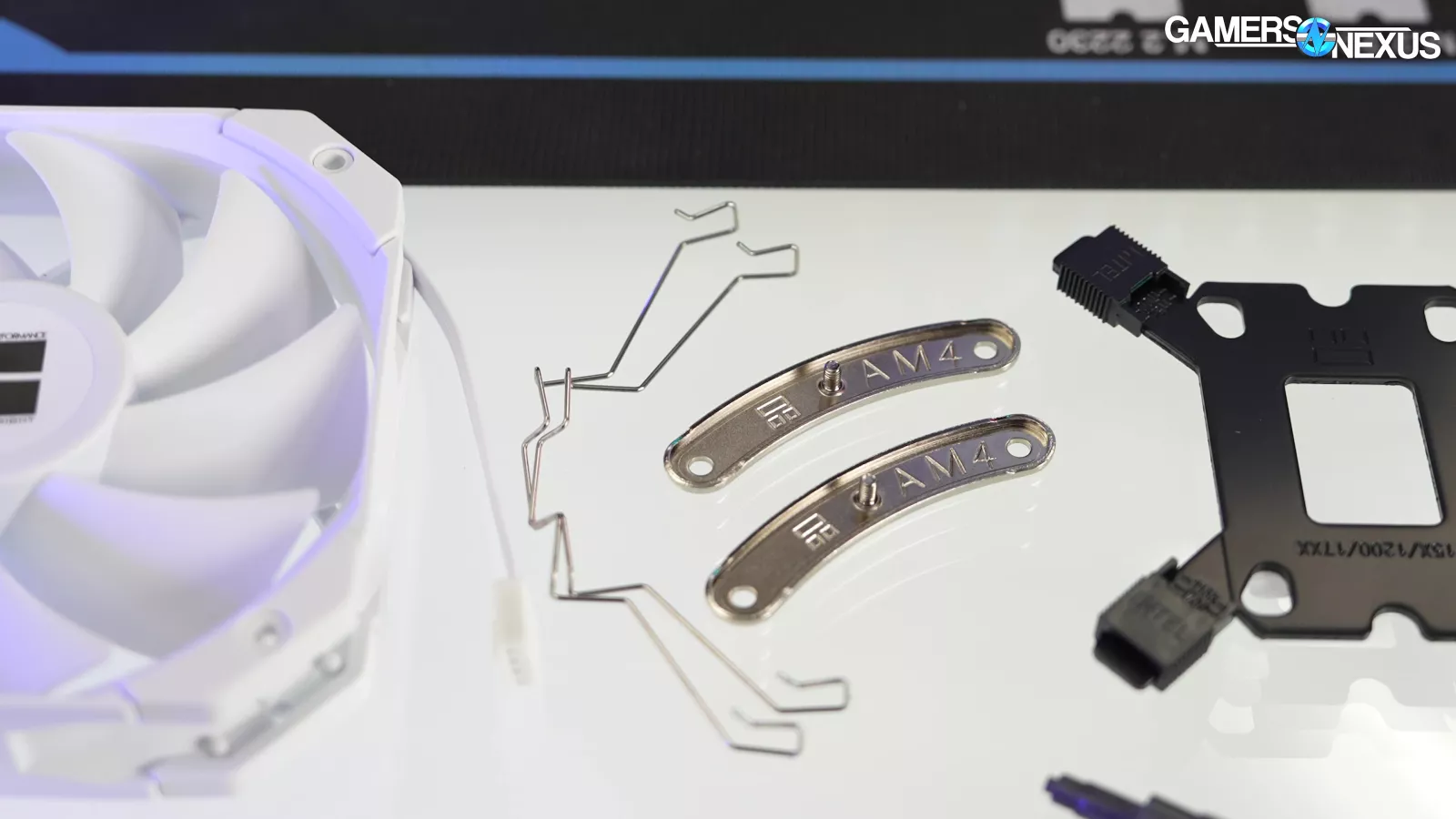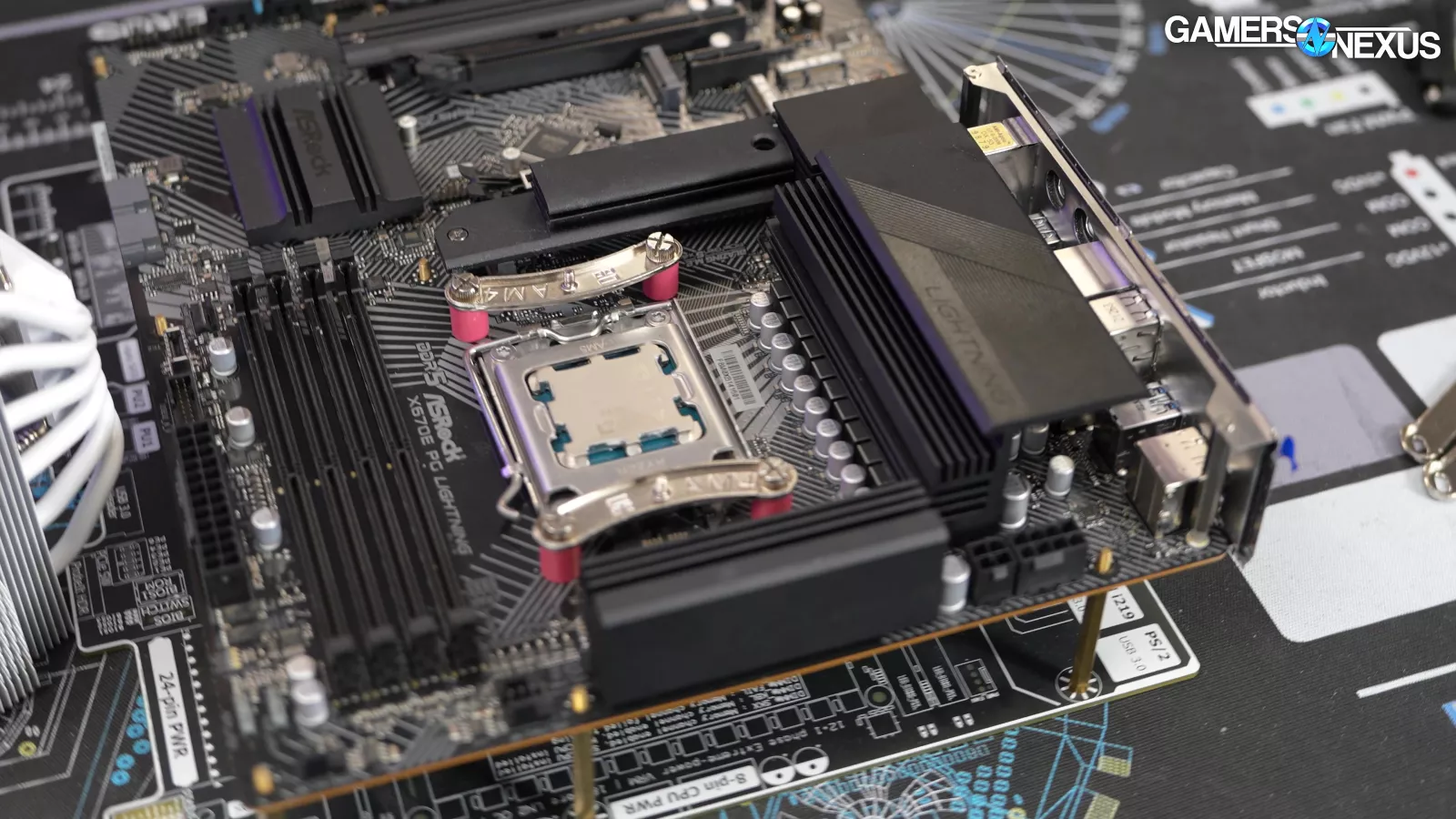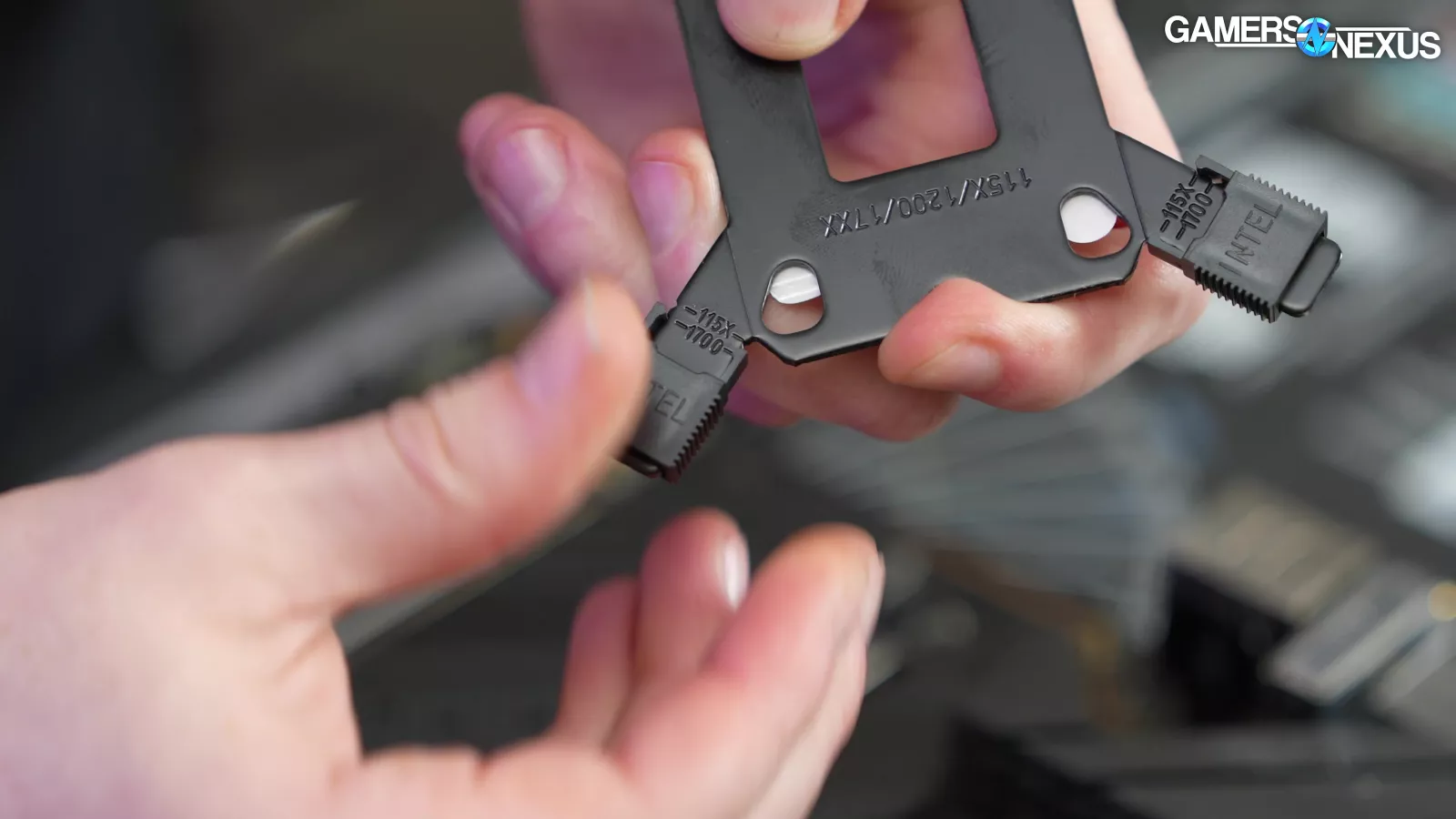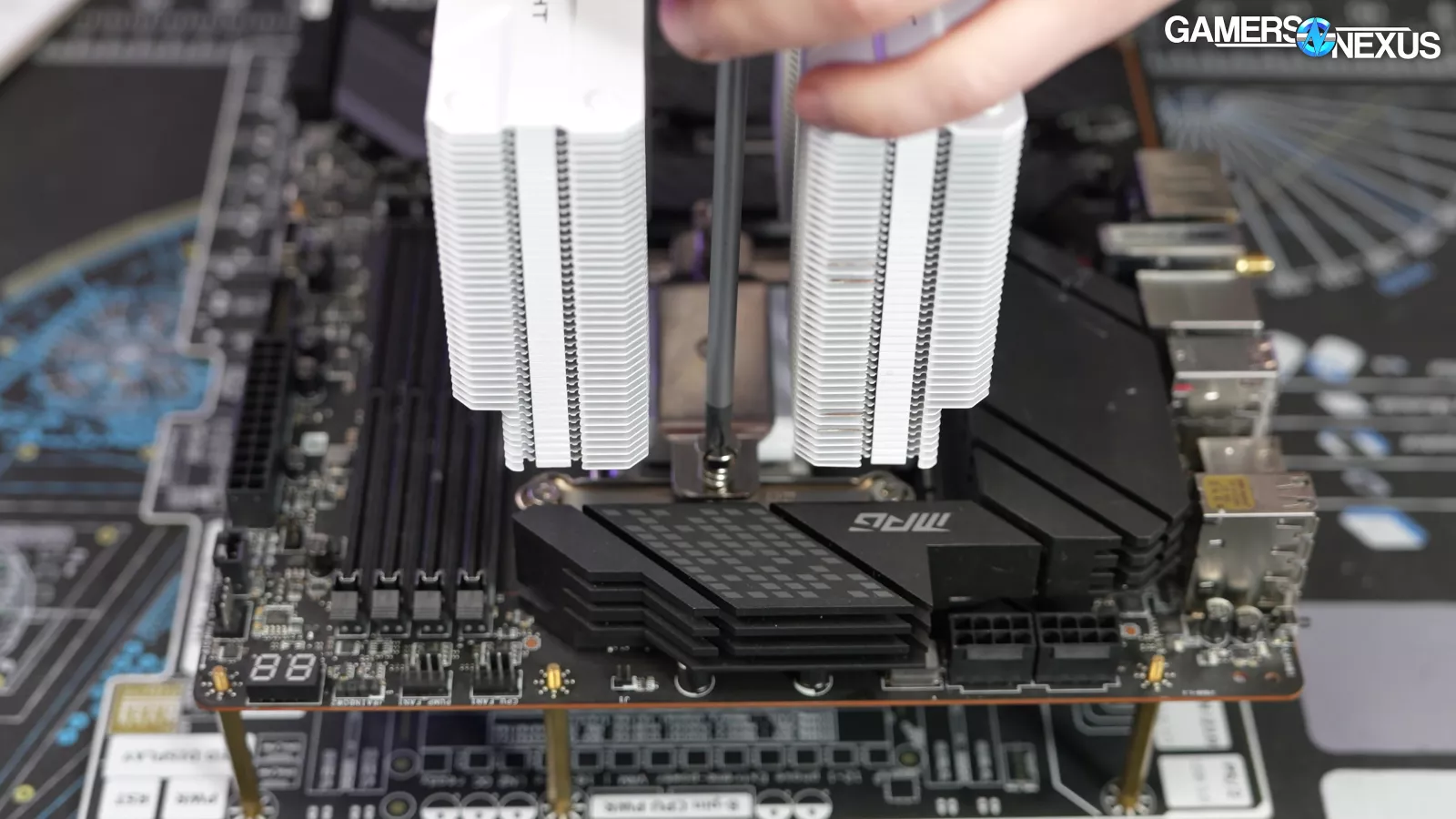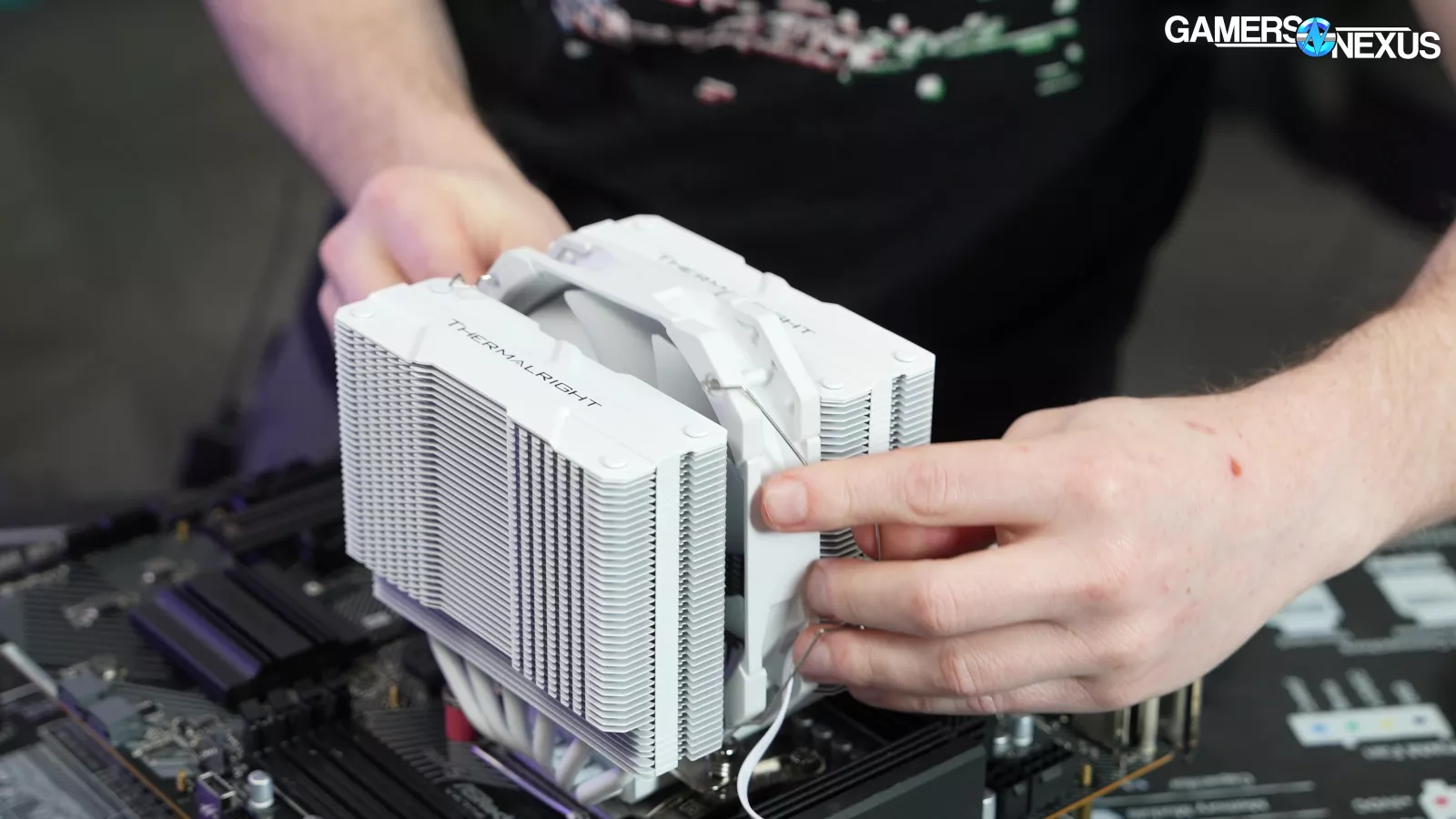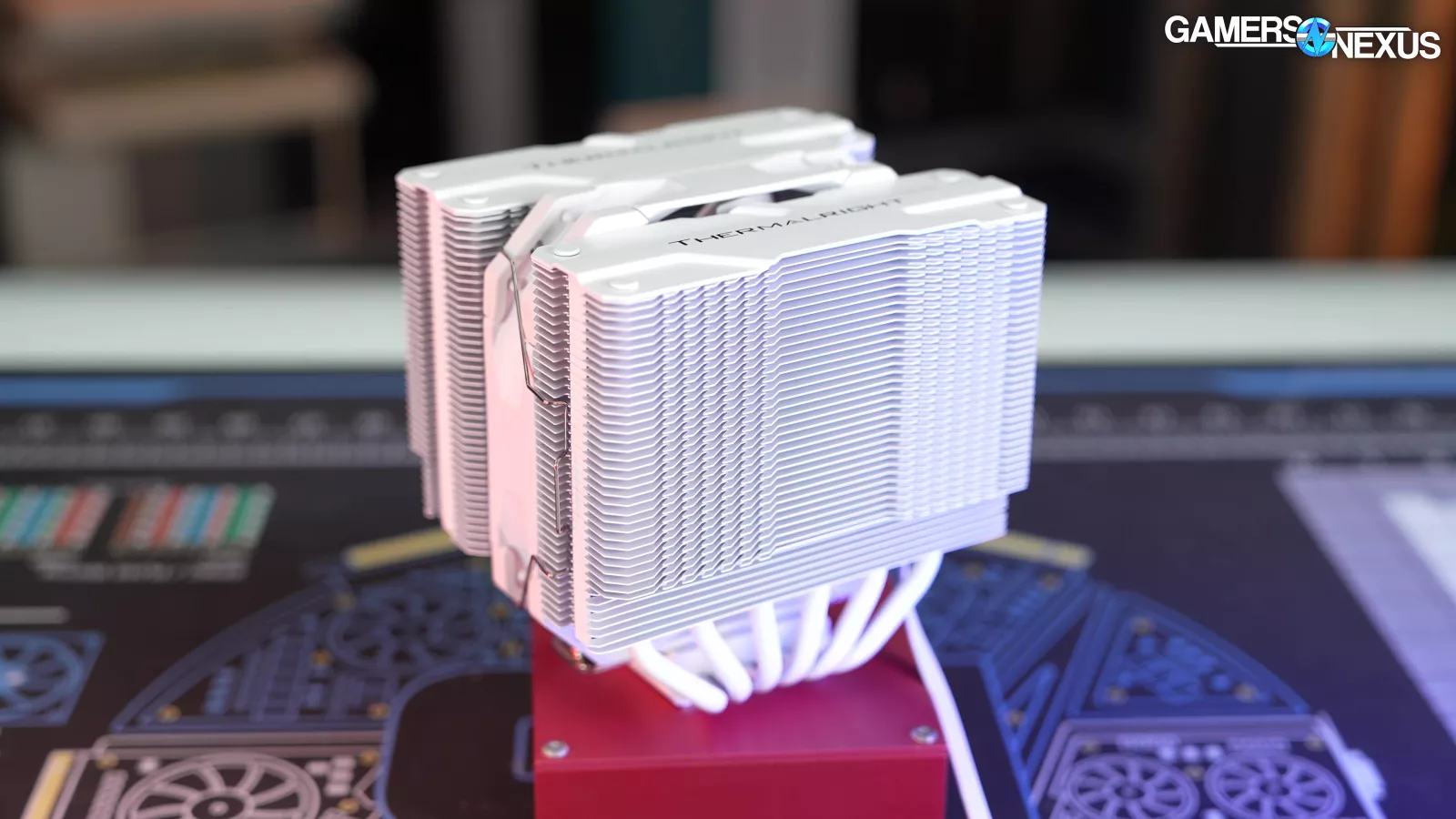
A strong performer for a limited amount of space.
The Highlights
- Smaller sibling to the well reviewed Peerless Assassin
- No price cut from the Peerless Assassin even though size has decreased
- Performs extremely well considering the size reduction
- Original MSRP: $35
- Release Date: December 21, 2023
Table of Contents
- AutoTOC

Thermalright Has a Cooler Addiction
Thermalright released this “smol” version of the Peerless Assassin and they did so quietly - we didn’t even hear about it. It’s almost like it's in the name. They called it the "Peerless Assassin Mini." When we covered this in the news announcement, our viewers pointed out that it looks very similar to the Silver Soul 135 which is one of the 8 million coolers that Thermalright released without telling anyone.
The Assassin Mini isn’t a perfect replica of the Silver Soul. We'll cover that in this review.
Compared to the original Peerless Assassin, the Mini is 22mm shorter and ships with a single fan, making it a potential compact option for cases with reduced vertical clearance from the CPU socket -- like larger ITX or micro/smaller-ATX cases. You are buying the Assassin Mini primarily if it’s going into a smaller case, so we’re going to be benchmarking this versus a ton of other cooler options on the market, including the original Peerless Assassin.
The Assassin Mini was $35 when we bought it - no discount for the fan reduction or the reduction in cooler size in total, but maybe that has to do with lower volume production runs. It's also possible that they're just charging a premium for it being the Assassin Mini.
Editor's note: This was originally published on March 14, 2024 as a video. This content has been adapted to written format for this article and is unchanged from the original publication.
Credits
Host, Writing, Testing
Steve Burke
Testing. Hosting
Mike Gaglione
Camera, Video Editing
Vitalii Makhnovets
Web Editing
jack Reitman
We immediately noticed that, despite the relatively low price and small stature and stout nature of the Assassin Mini, the cooler manages to maintain many of the features that made the taller variant good enough to get our best overall award for air coolers last year. The materials quality is also impressively good. We found that the fins are relatively sturdy despite normally coolers of this category having thinner/flimsier metal and a rigid and stout stature which helps with just feeling like a quality cooler.
So, let’s get into testing of this. We'll look at testing for thermals, pressure, and everything else.
Silver Soul 135 vs. Peerless Assassin Mini
The Silver Soul 135 is the one our commenters pointed us toward when we found out about the Mini in Hardware News, so let’s briefly look at the comparison.
Although we don’t own the Silver Soul, we can see clear differences from the retail page: The top cap and the fin stack shapes are different. The Assassin Mini has a fin stack that has a central indent and otherwise equal depth fins. Meanwhile, the Silver Soul has a cascading cut in the fin stack across the horizontal axis. The heatpipe caps are also different. The outer edge of the towers also differs, with the Silver Soul using a cheaper flat-edge plate at the borders (that protrudes), rather than the indented and recessed connective plate and sidewall on the Assassin Mini.
In terms of size, the Silver Soul is 94mm x 120mm x 135mm, whereas the Mini is 125mm x 110mm x 135mm, so that’s actually a fairly notable difference. Additionally, the fans are a little different. The Silver Soul fan climbs to 1850 RPM, while the Assassin Mini caps at 1500 RPM. The current (Amperage) is also lower as a result.
They’re definitely not the same cooler. They are similar, but it’s not accurate to call them the same.
Competition and Alternatives to the Peerless Assassin
Today we’ll be comparing the Assassin Mini to a lot of the other coolers we’ve looked at in the past, including the DeepCool AK400, the single tower Thermalright Assassin Spirit, and NZXT’s lackluster T120. be quiet! is in there as well and a couple others, however we haven't run too many short coolers through, like the 93mm class. That’s maybe a separate consideration, but we’d have to tweak the thermal bench a little bit to better accommodate those because they are shorter. As a result, they can’t quite handle some of the heat loads that we look at because of the surface area loss. But in our upcoming cooler methodology rework (which will follow our ATX case methodology rework, a portion of which is included in the Fractal North XL Case Review), the work includes introducing some new lower and middling heat loads to fully accommodate the stack, but today we’re focusing on 200W and 123W.
Mechanical Design
Mechanically, the Assassin Mini uses the same dimensions in most places as the full size Assassin. The towers for both the Assassin and the Mini are about 127mm long and 40mm across. They haven’t changed the other two dimensions. What has obviously changed is the total height, but the loss of verticality will multiply for a significant total surface area loss at the benefit of being shorter.
The vertical fin stack height ends up about an inch, or around 22mm, shorter than the original. Almost all of the height reduction comes from the fin stack. The cooler retains its 6 heatpipes and also keeps the recessed fins at the lower edge of each side, allowing clearance for taller memory modules or tall motherboard I/O covers.
As for the fan, it sits centrally and lowered, resting directly on top of the coldplate. This means that there will be air spillover into the VRM area of the motherboard, which should benefit VRM thermals and provide some airflow to the heatsinks. We’ll look at that in our charts today as well – it’s one of the upsides of doing this design.
The fan also has changed from the original Peerless Assassin: The Mini uses a fan with chamfered edges and is model TL-D12W PWM, whereas our original was TL-C12 PWM. Thermalright has also shipped multiple revisions of the Peerless Assassin now, so there are probably a few fan variations across them.
They are both 12V, 0.2A fans with a 1500 RPM target, so in spec, they’re the same. The blade count is the same, the struts are the same, but the inside of the rear of the chassis has a shallower gradient on the Mini.
CPU Cooler Test Bench
| Part | Component | Provided By |
| CPU | AMD Ryzen 5 3600 - Used for lower ~68W heat loads for small coolers. AMD Ryzen 7 3800X (2 chiplets active) - Used in all cooler benchmarks. AMD Ryzen 9 3950X (3 chiplets active) - Used for higher heat loads to show scaling on big coolers. | AMD |
| Motherboard | MSI X570 MEG ACE | GN Purchase |
| RAM | GSkill Trident Z Royal DDR4-3600 CL16 | GSkill |
| GPU | EVGA NVIDIA GeForce GT 1030 SC (passive cooler, second slot down) | GN Purchase |
| PSU | EVGA 1600W P2 | EVGA |
| OS | Windows 10 | GN Purchase |
Testing Plan
We’ll get into thermal benchmarks now. For this testing, we’re running two heat loads: 200W and 123W, and then for those, we have 100% fan speed and a noise-normalized result. This testing features the Peerless Assassin Mini vs. larger air coolers and liquid coolers in the 200W 35dBA test, whereas the other single fan solutions mostly start to show up in the 123W test. That’s because a lot of those, like the Vetroo V5, simply couldn’t handle the 200W load when its fan speeds were reduced. If you want a bigger picture of lower capability air coolers, that’ll be in the 123W test.
Thermals: 200W Noise-Normalized
We’ll start with our 200W testing at a noise-normalized level, which is a test we popularized as a means to standardize the coolers more fairly against each other.
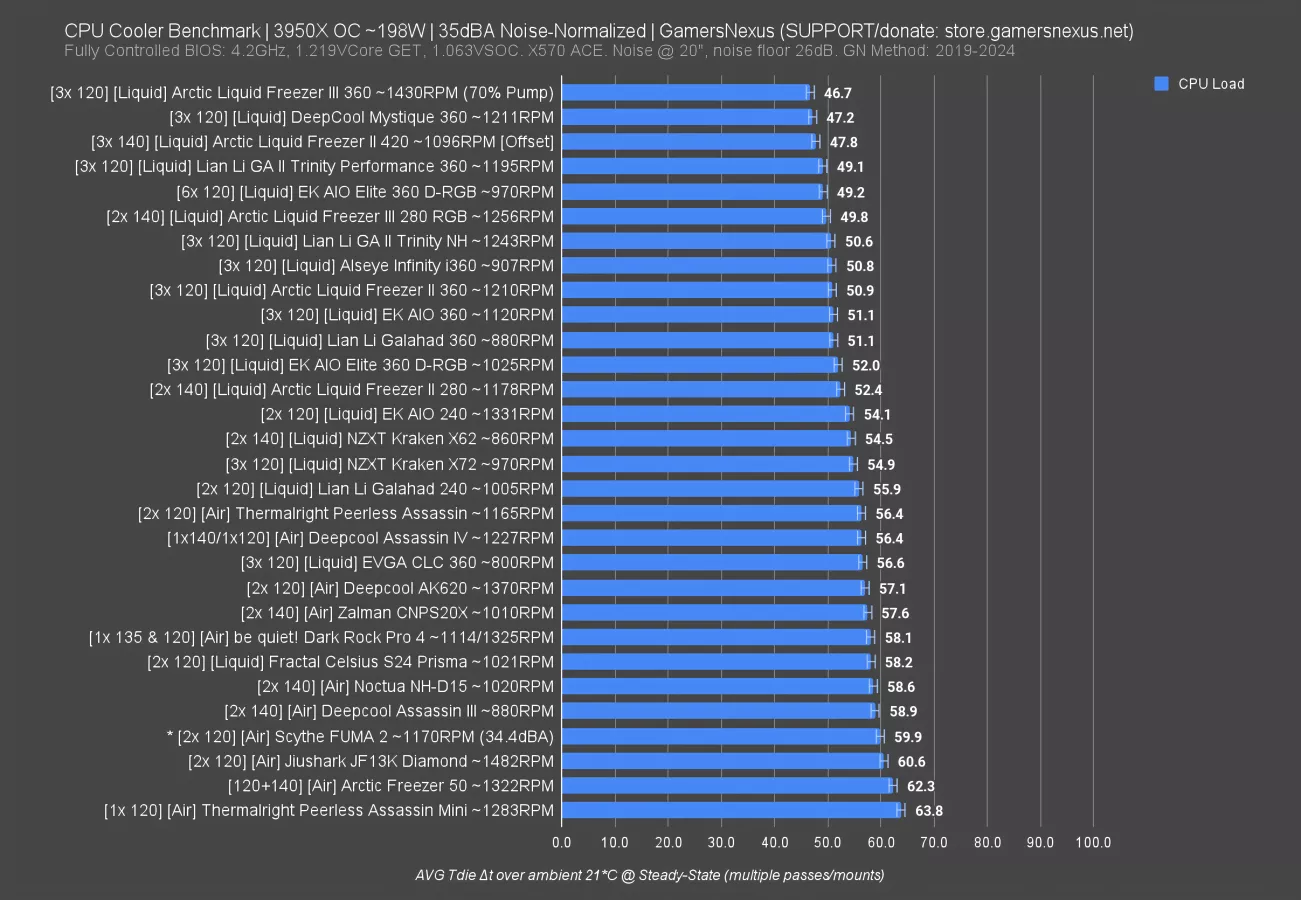
The Peerless Assassin Mini is equipped well enough to handle this load, but even still, it remains one of the least equipped coolers on this chart, where most are liquid or large air coolers. With its shorter tower, reduced surface area, and single fan, the Assassin Mini lands at 64 degrees Celsius over ambient for CPU load. At a 21C ambient, that has it at about 85 degrees for the actual measured Tdie. It’s borderline. In a case with lower quality ventilation, it may not be capable of handling this heat load at all.
The FUMA2 manages to outperform the Peerless Assassin Mini here, benefiting from two fans and also a larger finstack (including a 20mm height advantage) -- but it’s not as small, so the Mini still has its unique angle.
The original Peerless Assassin is the more interesting comparison: With two fans and the taller heatsink, it held a 56-degree temperature, tied with the also impressive Assassin IV. We liked the original Peerless Assassin for its value and the Assassin IV for its build quality, and despite having the same profession, they don’t work for the same “Assassin Master.” Maybe that’s the next Thermalright product.
Ultimately, the dual-fan Peerless Assassin ran about 7.4 degrees cooler than the Mini. That’s a big swing, but considering that height reduction has a multiplying effect on two other axes, it aligns with what we’d expect.
The Jiushark JF13K is another mini cooler that’s even lower profile, but much wider. This cooler outperformed the Assassin Mini by enough to matter. The extra fan helps. If your build can accommodate it, it’s a unique looking cooler that would work with moderate TDP CPUs. We actually liked this one a lot more than you might expect given that it looks a little gimmicky, but it works and it looks pretty cool, so check out the review if you want to learn more about it.
It seems that, if you need a mini tower, the Assassin Mini at least outperforms coolers that couldn’t make it onto this chart because they were throttling. Let’s move to look at some of those.
Thermals: 200W Full Fan Speed
More coolers join the chart at 100% fan speed. Noise levels are uncontrolled now, but the heat is more tenable for them.
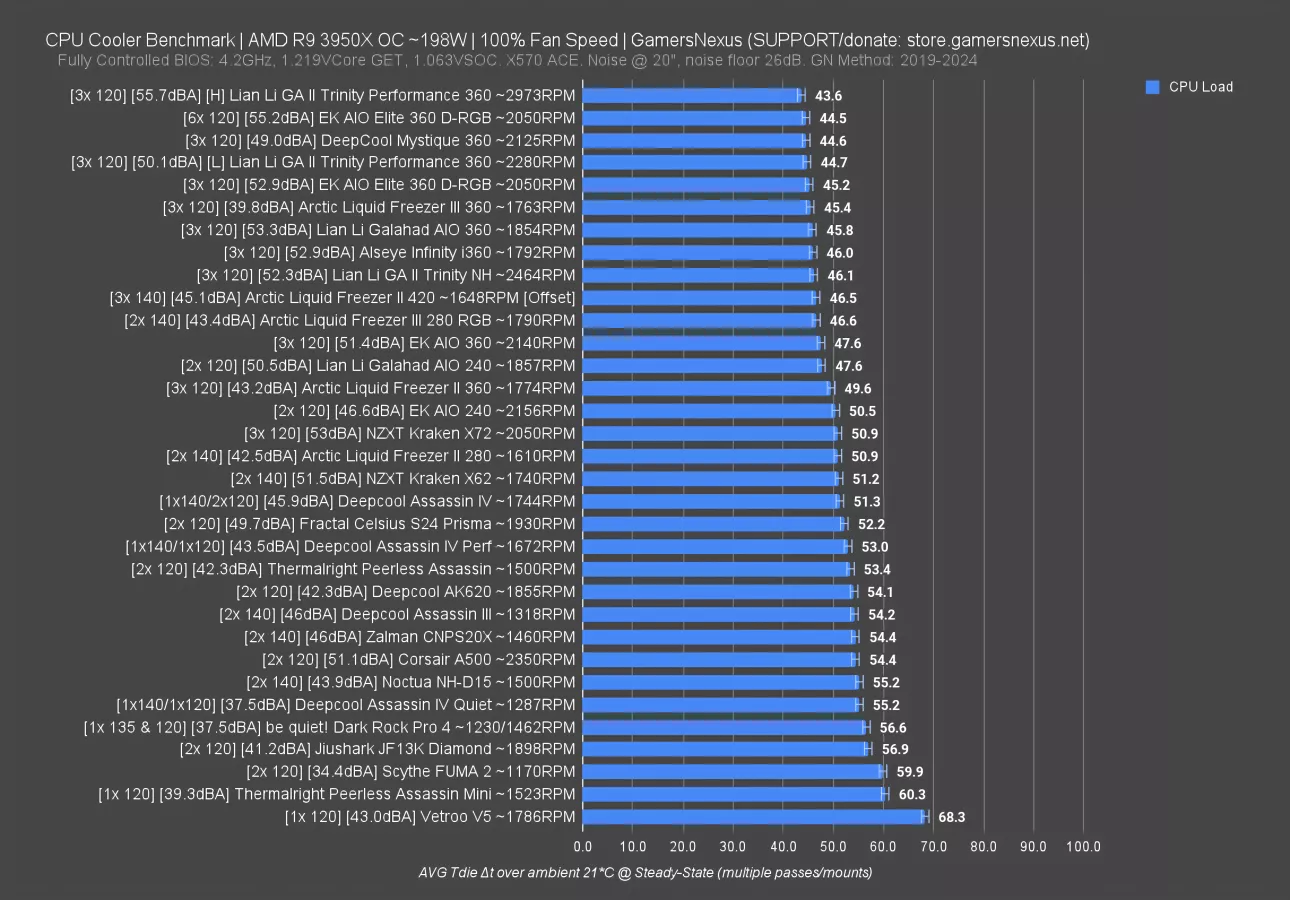
The famous Vetroo V5 runs at 68 degrees over ambient, so it’s just barely capable of operating with this load. The Mini is able to reduce the CPU temperature to 60 degrees as a result of the increased fan speed, which brought it to 39 dBA. That makes it significantly more noise efficient than the V5, which operated 8 degrees worse and 4 dBA louder (which is noticeable). The FUMA 2 is about tied with the Mini here, but that’s because the FUMA 2 was maxed-out on its fan speed already. As a result, its noise efficiency is far superior to the Mini, but again, it’s taller.
As for the original Peerless Assassin, that one runs at 53 degrees, so it maintains a similar ~7 degree reduction and stays alongside the Assassin IV with its Performance mode.
The Jiushark is interesting again, improved by about 3.4 degrees over the Mini at 2 dBA louder.
Thermals: 123W Noise-Normalized
Reducing the heat to 123W makes it easier to compare against lower-end coolers that couldn’t clear the prior threshold without throttling.
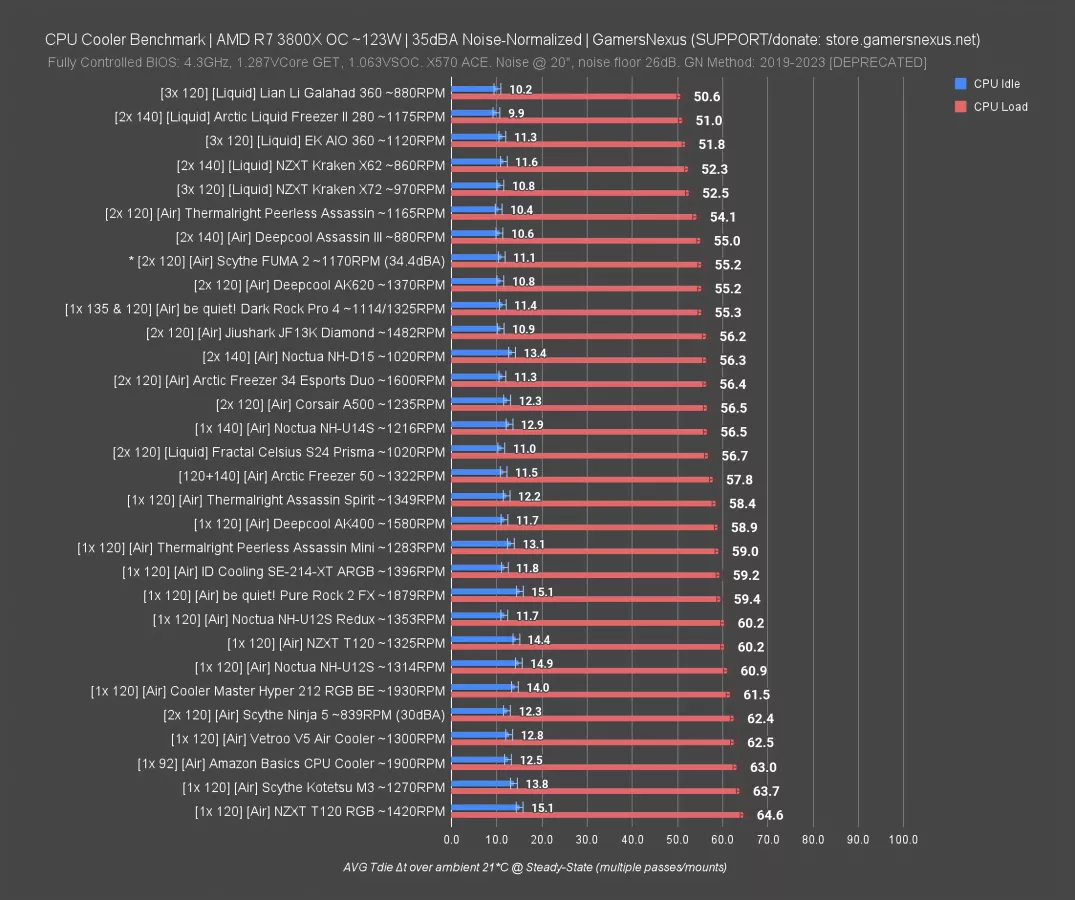
Here, we have the appearance of some new entries in air: The NZXT T120 RGB, which was remarkably bad due to its fan quality reduction from the baseline T120, the Scythe Kotetsu M3, the Amazon Basics cooler (which is a Cooler Master cooler), the Scythe Ninja 5 that we didn’t particularly like, the Hyper 212 RGB Black Edition, Noctua’s NH-U12S, and plenty more, like the DeepCool AK400 and be quiet! Pure Rock 2 FX.
This chart has a ton of air coolers.
The Peerless Assassin Mini isn’t the worst: At 59 degrees over ambient, it’s comparable to the taller (but still small) AK400. Thermalright is making up for the height loss in width. The original Peerless Assassin runs at 54 degrees over ambient here, putting it up in a different class of cooler from the Mini. The Mini is more comparable to the Assassin Spirit, which is a single-tower, normal height solution. The JF13K remains advantaged in the small class of coolers due to its width. How you call it “small” depends on which dimension you are referring to, but ultimately we remain fond of this cooler just for its performance given the weirdness of it.
Overall, the Assassin Mini is doing well here against its 20mm taller counterparts. Thermalright is compensating well with the heatsink.
Thermals: 123W Full Fan Speed
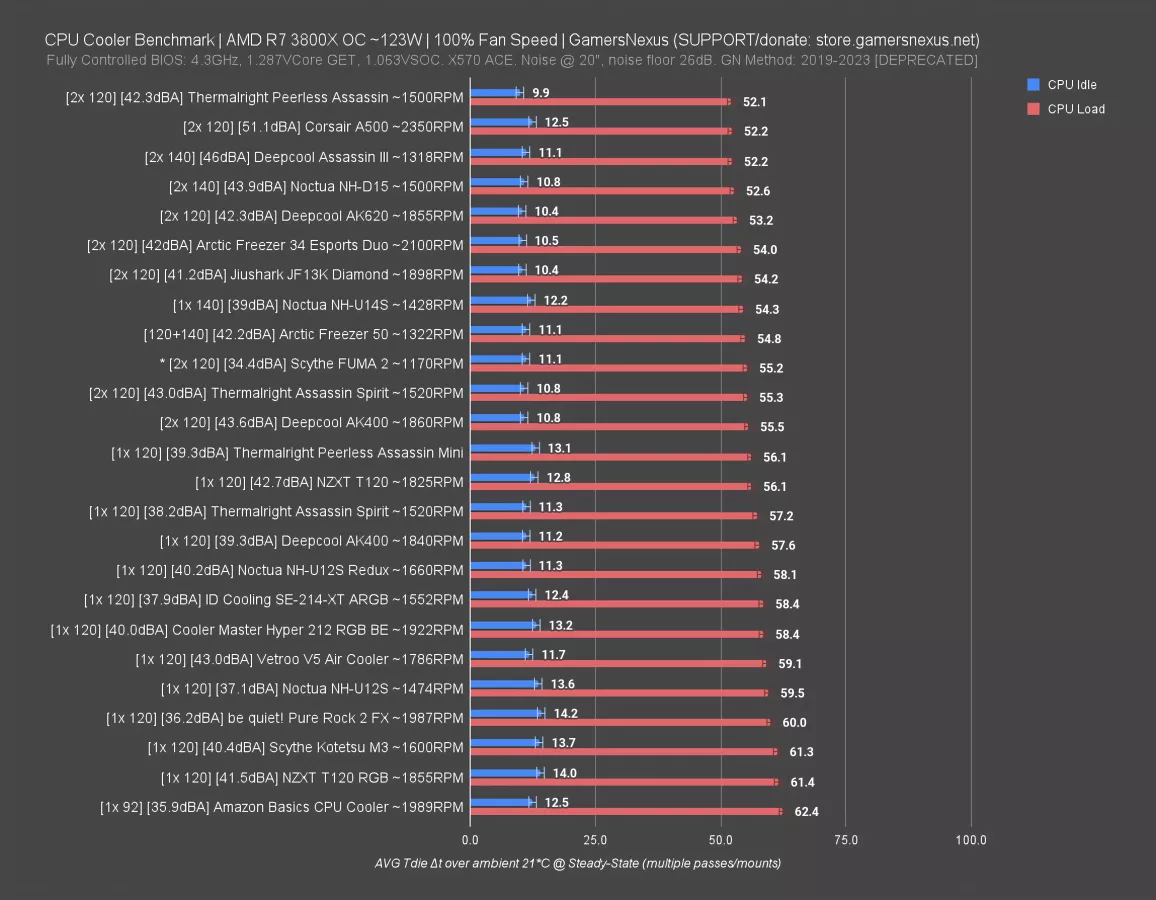
At 100% fan speed and still at 123W, the Assassin Mini passes the Assassin Spirit, now at 56 degrees (and still about tied with the AK400). The Mini shows strengths in noise efficiency as compared to the louder NZXT T120 and DeepCool AK400, which are roughly equal thermally. The larger Peerless Assassin is 4 degrees cooler at 52C, but also louder. Because the heat load has reduced, the observable difference between these two coolers has also reduced.
VRM Thermals: 200W Noise-Normalized
Finally, we’ll look at VRM thermals for the surrounding MOSFETs while under the 200W, noise-normalized load. This is mostly interesting because of Thermalright’s decision to smash the fan deeper into the cooler, which has the unintended benefit of lowering it to better cool the VRM, in addition to giving the height clearance.
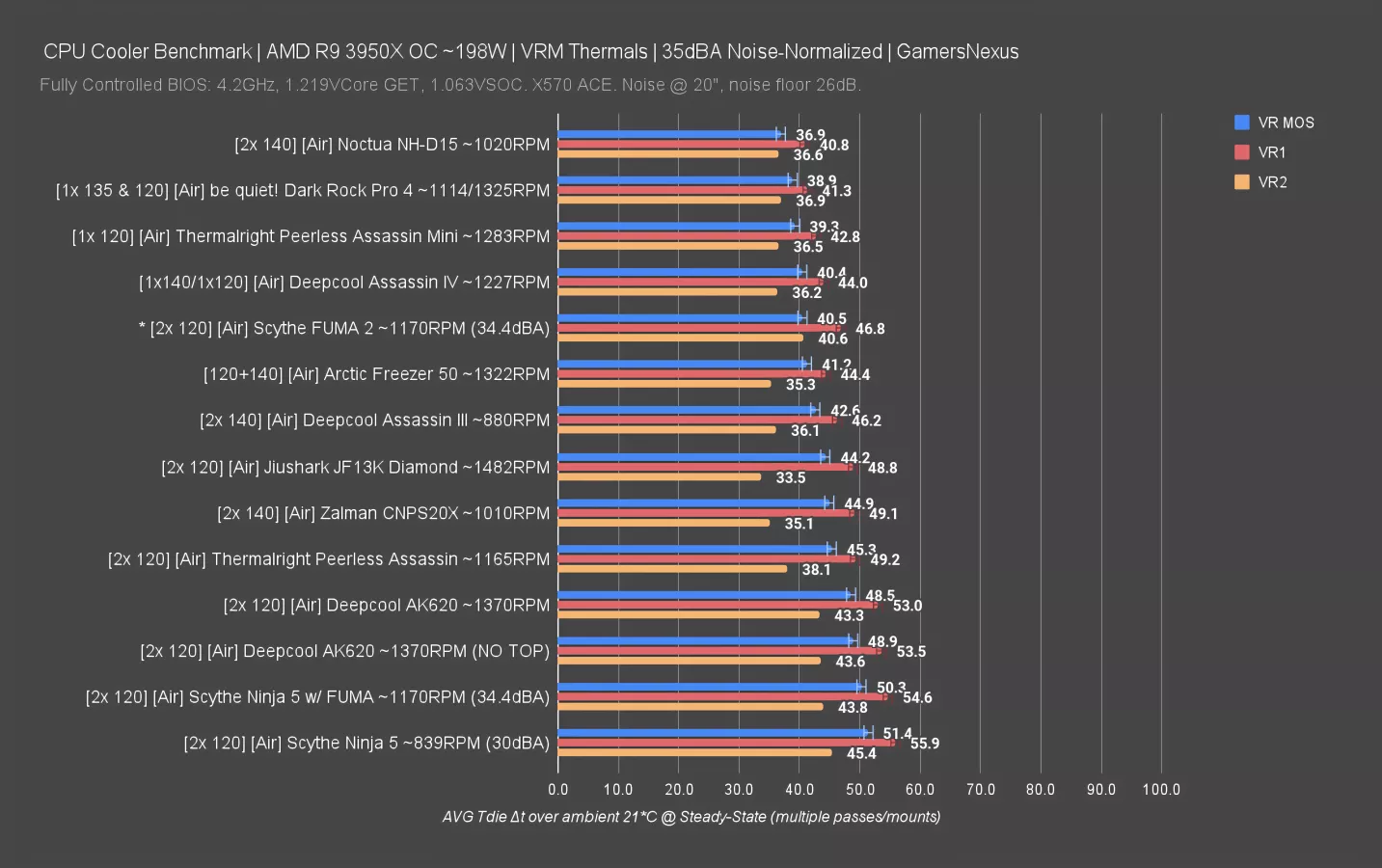
The Mini held MOSFET temperatures of 39, 43, and 37 degrees over ambient, which made it cooler than the original dual-fan Peerless Assassin by upwards of 8 degrees. That’s an impressive change for some of these numbers and shows how much impact a cooler can indirectly have on the VRM. The NH-D15 remains the chart leader, benefiting from two larger fans that both extend into the VRM area of the board. The JF13K sits between the two Peerless Assassins thanks to additional coverage over the VRM and the downdraft design.

Pressure Scan Testing
Pressure scans are up next. This testing uses a mixture of a special contact pressure paper and a calibrated scanner that analyzes the result and produces a pseudocolor image showing a sort of “heat map” of pressure distribution across a surface. This testing is done to evaluate the quality of the mounting hardware. As a side effect, it can sometimes illustrate the flatness of the coldplate -- but mostly, we use it for analysis of the mounting kit.
Many years ago now, we were able to purchase this hardware as a direct result of the support of our Patreon backers and GN store customers and we still use the equipment to this day. We have now produced hundreds of pressure maps and have uncovered big shortcomings (and excellent designs) in products as a result. To support us in the continued testing time to run all these benchmarks, please visit the GN Store and grab one of our brand new GN tear-down logo hoodies, which use an ultra soft, comfortable material that’s warm enough for cool weather but still usable inside. The team has been wearing these hoodies around the office for a year now, so we just launched them to the store a week ago. You can also find our coaster packs for drinkware, our 3D emblem pint glasses with a special metal badge for our 15-year anniversary last year, and more. Thanks for your support. Let’s get into the pressure scans.
One of the Best Pressure Scans
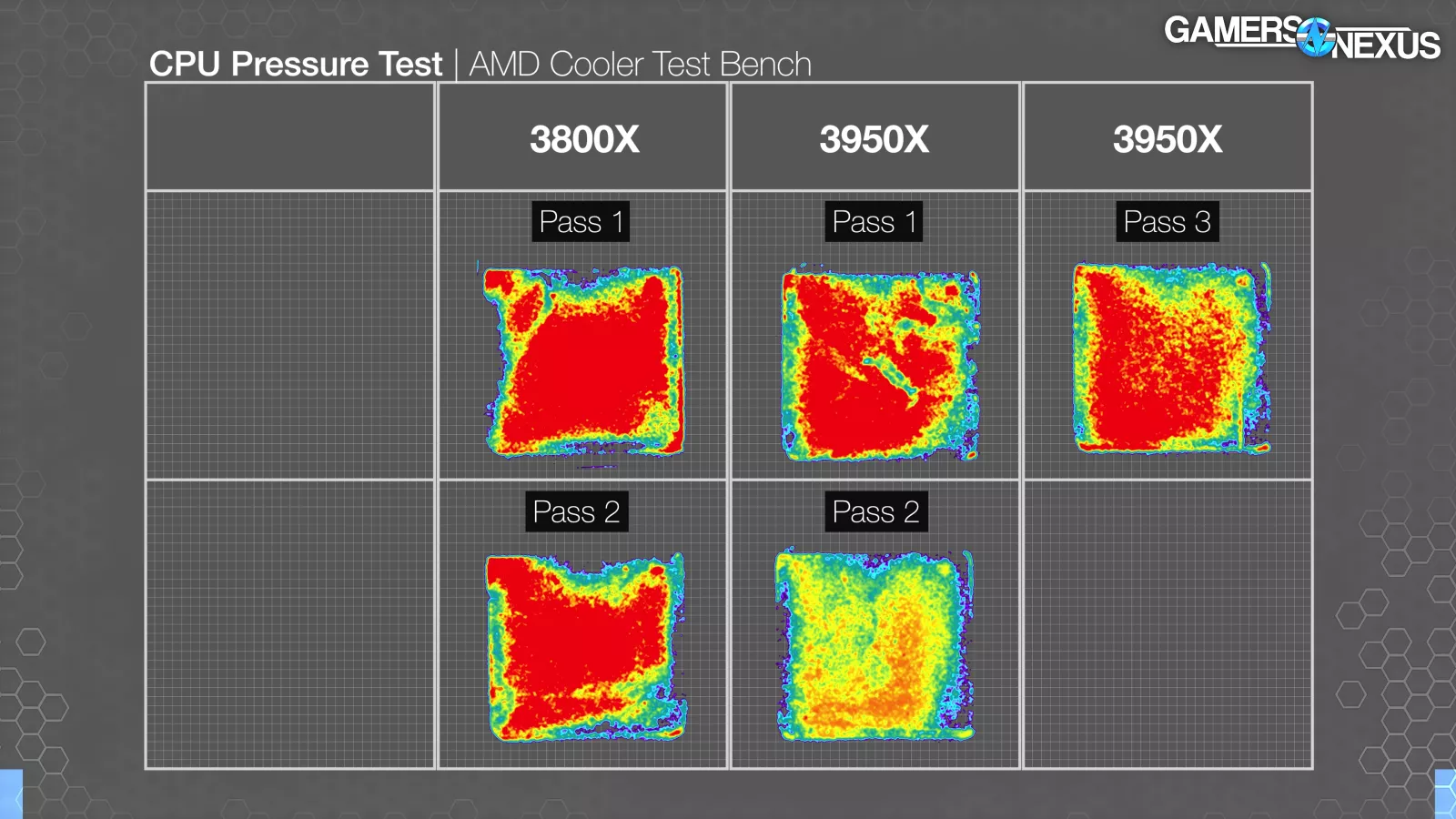
Here are the pressure results of the Assassin Mini. Our two tests on the first CPU produced consistent scans showing high mounting force and contact pressure across the entire center of the IHS, extending out toward the edges. There are very slight gaps at the far central edges, but otherwise, this is one of the best pressure mounts we’ve seen in this testing. It’s up there with some of the Intel contact frame results for even distribution.
The second CPU produced similar results, but with better distribution out to the central edges. This is natural variance between CPU lids. The result is again excellent pressure distribution, which speaks to the mounting system that Thermalright designed. It’s a simple solution that distributes pressure evenly and holds firm, which is exactly why we chose the original Peerless Assassin for our case test bench that’s coming up.
Peerless Assassin Installation Instructions (Intel & AMD)
We’re going to start with AMD first and then we’ll move over to Intel.
The first step for AMD is to remove the stock mounting brackets. After that, place down the standoffs and attach the mounting brackets, which are threaded through the standoffs, and then tightened down with a screwdriver. You will notice that these brackets say "AM4" on them, but they are compatible with both AM4 and AM5. They do not include a separate bracket for AM5. In the directions Thermalright shows the AM5 installation with the AM4 labeled brackets.
Now we're ready to apply thermal paste and then mount the cooler. Give the nut about a half of a turn to a full turn to get the threads engaged and then go to the other side and do the same. Then slowly go side-to-side, alternating so you get an even pressure – you'll feel a hard wall when they're tightened all the way down. Last, you put the fan on.
Let's take a look at Intel. The first step is pulling the metal tabs out of the backplate to make them compatible with LGA 1700 (or LGA 1150 if that is the socket being used). Two adhesive pads on the back can optionally be removed to help secure the backplate, but this is not a necessary step.
Then, slide the backplate under the motherboard and take the standoffs and begin to thread them into the backplate. These have a washer on one side; put the washer side down towards the motherboard so that it's making contact with the motherboard. This helps protect it from the metal of the standoff.
The installation of the bracket comes next. There are three positions noted in the instructions - we want the center position of the three holes for LGA 1700 for this application. Attach the bracket to the standoffs and screw them in, making sure they are tight. Next, apply thermal paste and mount the cooler just like for AMD: give the nut about a half of a turn to a full turn to get the threads engaged and then go to the other side and do the same. Finish the process and attach the fan.
We don’t really have any criticisms for the mounting hardware. It is very straight-forward to work with, making for easy installation on both AMD and Intel.
Conclusion

The Assassin Mini is definitely warmer. In some tests, it's about 7 degrees warmer than the original Peerless Assassin. At the lower heat load, we’re seeing about a 4-degree difference and at the higher heat load it’s 7 degrees. The more strain the cooler is under (the closer it is to borderline able to hold CPU die temperature just below throttling), the more that gap is going to widen, and that is exactly what we saw during our tests here.
Obviously the larger one (the Peerless Assassin) is better, and it also has an extra fan; however, the smaller Assassin Mini was still able to handle our most intensive heat load that we’re currently running. We’re adding 250W or 300W heat loads for some of the Intel tests coming up as we start to employ the methodology.
If you have a really restrictive case -- like an ITX case with solid paneling or something similar -- then this will struggle with higher heat loads and may throttle. If you have good airflow, then it is able to handle the 200W load as we test it.
We think for the size and for the single fan solution, the Assassin Mini is an excellent performer. It maintains nearly perfect pressure contact, which is specifically a testament to Thermaright’s mounting kit which distributes the load very well. This is why we chose the Peerless Assassin (original) for our new case methodology: we wanted something that distributes the load basically perfectly and has good contact across the IHS, is spring-tensioned, and will stay where we put it. The Assassin Mini maintains all of those benefits of the original, with the downside of being a little bit warmer, but with the possibility of maybe fitting it in a specialized case that you could not fit the original in.
Additionally, an interesting aspect was the VRM cooling where we saw improved VRM thermals just between these two because of the nature of the recessing the fan deeper into the Assassin Mini, where it sits right on top of the coldplate and hits the VRM heatsinks a little better. There is sometimes a significant reduction in thermals for some of the neighboring MOSFETs.
For downsides, the lack of a price cut (compared to the Peerless Assassin) might feel a little bit bad given that it’s one fan less, less material, and still the same price (at least for right now). A big disclaimer here is that Thermalright’s prices change wildly (and all the time with the Assassin Spirit 120).
It's possible that Thermalright sees a gap in competition and feels like they can charge more. If we’re being charitable, it’s because of lower production runs, so maybe the material cost doesn’t actually change that much when you count labor - we really don’t know either way.
Fortunately, it performs very well and we were happy with it. We could recommend the Mini if you’re in a case that’s small enough where the 20mm size difference is necessary. If you don’t need the extra 20mm of clearance, get the taller one. The Jiushark JF13K is also definitely worth considering. It's an interesting cooler that we liked in our testing, it performs better than we expected, and it looks cool.
